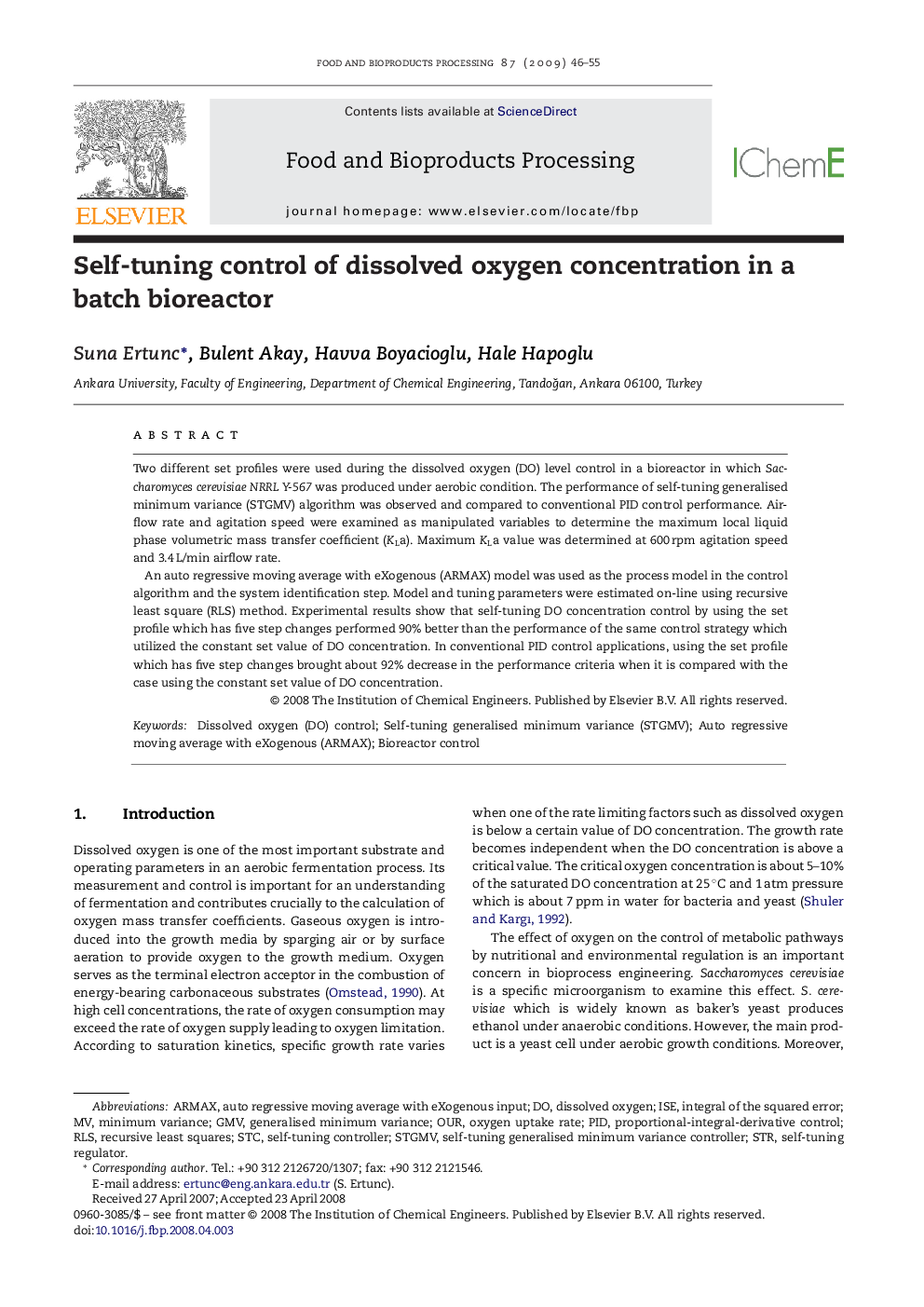| Article ID | Journal | Published Year | Pages | File Type |
|---|---|---|---|---|
| 19277 | Food and Bioproducts Processing | 2009 | 10 Pages |
Two different set profiles were used during the dissolved oxygen (DO) level control in a bioreactor in which Saccharomyces cerevisiae NRRL Y-567 was produced under aerobic condition. The performance of self-tuning generalised minimum variance (STGMV) algorithm was observed and compared to conventional PID control performance. Airflow rate and agitation speed were examined as manipulated variables to determine the maximum local liquid phase volumetric mass transfer coefficient (KLaKLa). Maximum KLaKLa value was determined at 600 rpm agitation speed and 3.4 L/min airflow rate.An auto regressive moving average with eXogenous (ARMAX) model was used as the process model in the control algorithm and the system identification step. Model and tuning parameters were estimated on-line using recursive least square (RLS) method. Experimental results show that self-tuning DO concentration control by using the set profile which has five step changes performed 90% better than the performance of the same control strategy which utilized the constant set value of DO concentration. In conventional PID control applications, using the set profile which has five step changes brought about 92% decrease in the performance criteria when it is compared with the case using the constant set value of DO concentration.
